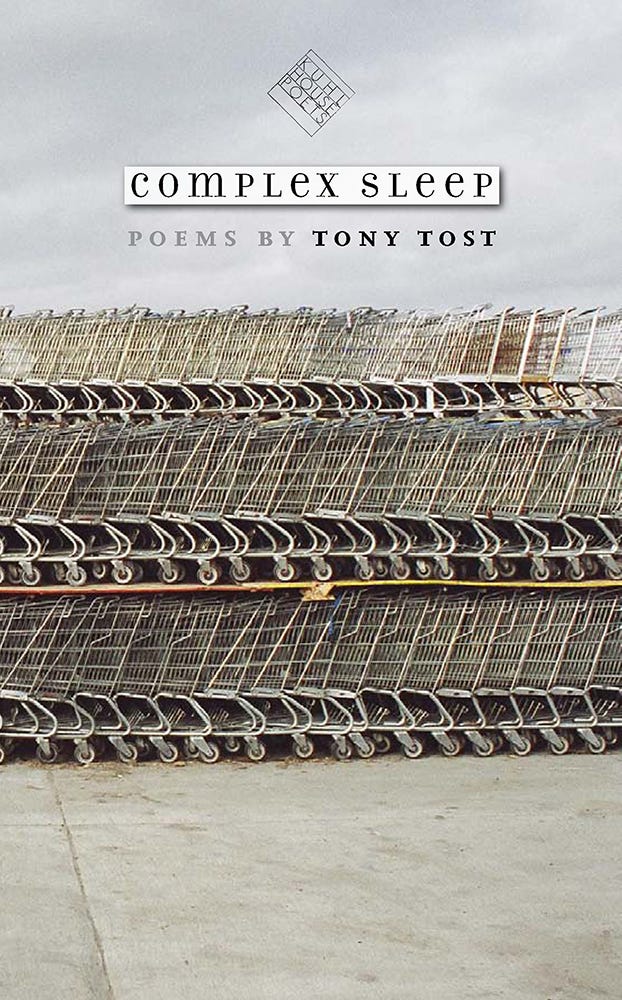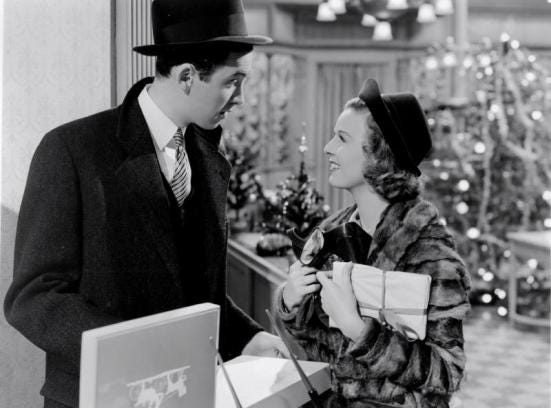If you’re farther along in your screenwriting development, this post probably doesn’t have too much value to you. It’s pretty basic shit. But then again, I do read scripts by professional or near-professional screenwriters where the action lines and scene descriptions are an active hindrance to the reading experience. So…who knows? Anyway.
I have one basic rule of thumb when I’m writing action lines:
Every sentence equals a shot.
And that’s sort of it. I deviate from this sometimes when I need to, but it’s my basic approach to 90% of the action lines I write.

My background is in poetry.
The sort of poetry I used to write wasn’t emo/diary/confessionalist sort of poetry. I’m way, way too pretentious for that. My poetry was sort of imagistic surrealist, as filtered through a sort of hick lens. I liked to approach my emo personal shit indirectly.
My big influences were NY School poet-art critics like John Ashbery and Frank O’Hara, along with experimental poets like Ezra Pound, Charles Olson, Rosmarie Waldrop, and Robert Creeley, plus Arkansas outsiders like Frank Stanford and C.D. Wright, plus a medley of writers in translation: Kafka, Lorca, Rimbaud, Vallejo, Cesaire, Pessoa, Rilke, Calvino.
One thing that laundry list of poets has in common is this: the primacy of the image as a poetic unit. A killer image — especially one with emotional or psychological resonance — will get me any time.
And if you connect — through association, or juxtaposition, or even just via rhythm — enough killer images together, then chances are you’ve written a killer poem.
When I decided to try my hand at screenwriting, I very quickly realized that a similar principle applied here as well.
My favorite poems often linked together disparate, fully realized images in order to generate emotions.
My favorite scripts often do the same thing. Sometimes, writing a script is just linking compelling images together to generate emotions.
Obviously, dialogue is important. Themes are important. Subject matter, etc etc.
But I think screenwriting at its heart is writing in images. So I try to approach the action lines and descriptions in my scripts — usually in the revision stage — with this conviction in mind.
Right now between more pressing and/or paying projects, I’m dabbling on a script for a martial arts film. I love martial arts movies and fun action movies in general and want to play around in that genre playbox a bit.
Here’s an early scene from the script-in-progress. And true enough, the principle that every sentence equals a shot holds up here. Well, almost.
When I first wrote the scene, it had longer sentences. It was also a bit more passive in its descriptions. Which is fine. First pass is me just trying to find out what the scene wants to be.
But once I do realize what the scene wants to be, I immediately start sharpening it. I often drop excess descriptions and boil the scene down to the key images themselves.
That’s because films for me are made up primarily out of SHOTS and CUTS.
Shots and cuts are the basic building blocks of filmmaking.
I think a lot of screenwriters approach the non-dialogue portions of their script as if this wasn’t the case. As if the non-dialogue portions of a script are suddenly a novel or short story. That is, you’ll read their dialogue and the story gets flowing and the drama gets percolating. And then suddenly everything screeches to a halt so you can read a paragraph or two of non-cinematic description.
That approach actually works for some screenwriters, some of whom are much more successful than I am.
But I want the movie I’m writing to unspool naturally in the reader’s imagination as they read from sentence to sentence, scene to scene, page to page. So I try to write action lines as a series of implied shots and implied cuts.
There is often a question about how much you should “direct” on the page.
My answer is this — you should direct constantly on the page.
But your reader should also be almost completely unaware that you’re constantly directing them.
When you approach each sentence as a shot, you can manipulate both the object of attention and the scale of attention and the length of attention. You can also add in a little color or texture while you’re at it, depending on what you want to emphasize and what you want to breeze past.
That’s not so different from directing for real, by the way.
As I think my little sample above illustrates, it doesn’t have to be anything flashy.
“A well-guarded colonial MANSION at the edge of this city.”
This isn’t poetry. It’s the written equivalent of a wide establishing shot.
The juice in this scene isn’t in the mansion itself, or in its relation to the city. So to my mind, I don’t need to go into detail describing it. The location can be established with efficiency in order to more quickly get to where the real juice is.
My favorite director is Howard Hawks. And he once told John Wayne his theory of acting: “‘Duke, you do two or three good scenes in a picture and don't offend the audience the rest of the time…Get it over with as soon as you can.’”
Anyway, that’s what that first sentence is aiming to do. Just getting the establishing info over with as quickly as I can.
The next action line is similar: “A man named ZIZAN (40s) guards the front door. He's heavily armed, in shape.”
There’s no “wide shot” or “medium shot” in these descriptions — but I have written the sentences to imply those types of shots.
I do this by the scale of attention in my description.
The first line presents the house and its relation to a larger city. And that’s it. Because that to me is the shot.
The second line focuses just on a single man and his location in relation to the house. Because that’s a new shot, with a different scale to it. It’s the next key piece of visual information.
Next lines:
“But right now Zizan's grinning while watching something on his iPhone. It's an old Roadrunner Looney Tunes cartoon.”
So that’s two sentences. And once again, they’re written to suggest two shots.
The first shot is a close up of Zizan’s face (to show that he’s grinning) while looking at something on his phone.
The second shot is a reverse of that Zizan closeup: an insert type shot of a Looney Tunes cartoon playing on his phone.
I could’ve easily written those two sentences as a single sentence with all that information packed together. But I want to get the movie rolling in the viewer’s imagination, so I’m presenting it with the logic of shots and cuts.
Each period implies a cut, by the way.
Next lines:
“Zizan smirks at the clueless Wile E. Coyote. But what Zizan doesn’t realize is that he’s the Wile E. Coyote in this scenario.”
This is a bit of a deviation from the other action lines. These two sentences imply a continuation of the dramatic beat: an armed guard is being distracted by a childish cartoon on his phone.
But really, these sentences are just setting up the next sentence. Because if there’s any juice in this scene, it’s in this upcoming image:
“There’s a NOOSE lowering down, just above Zizan's head, closer and closer as the clueless guard giggles to himself.”
Once again, I’m suggesting a shot size without explicitly calling for it.
The sentence suggests that this shot wants to be a bit of wider than the previous ones. Because for the irony to really land, you need both the image of the armed guard watching a Looney Tunes cartoon and the image of a Looney Tunes-esque threat in the same frame.
Which is why both images are in the same sentence. Because I think they should be in the same shot.
So, nothing mind-blowing. But for the kinds of scripts I write, it’s a principle that seems to serve me well. It usually keeps a brisk, page-turning pace. It forces me to focus on the elements of the scene that really matter visually.
Given the choice between writing important movies/TV shows and entertaining ones, I’ll choose entertaining every time. So, I want my scripts to be a fun read.
Few cinematic elements are more fun than a good reveal. And I think writing your action lines one shot at a time allows you to set-up and unleash reveals in a way that more generalized or literary prose just can’t.
And since writing action lines in a shot-by-shot manner hews pretty closely to the logic of cinema itself, you can create little imagistic short stories.
These opening scenes of my in-progress martial arts flick are just setting the stage for a bigger action set-piece that’ll take place inside this fictional colonial mansion.
But hopefully the closing image below adds a little melancholy humanistic touch to help ground the over-the-top action to come.
T.S. Eliot introduced a term I’ve always loved, the Objective Correlative: “a set of objects, a situation, a chain of events which shall be the formula of that particular emotion.”
It’s not exactly symbolism, I don’t think. More like a closed set or system of images and situations and associations that can create a very particular emotion.

That is, you return to the same set of images — in this case, a guard, an iPhone, a cartoon, a rope — and by manipulating and offering variations on this image-set, you can create a unique emotion. If you want to see an amazing version of this, watch Ernst Lubitsch’s The Shop Around the Corner with James Stewart, and note how Lubitsch ingeniously uses the same cigarette box in about six different dramatic scenarios.
I’m not saying my poor guardsman Zizan watching a Looney Tunes cartoon on his iPhone at the start of a sequence and then that same iPhone playing on after he’s dead a few moments later is The Wasteland or has the Lubitsch touch or something.
But I do think it’s a nice little imagistic flourish. And I think if I can collect enough of these flourishes and little image-systems in my script — while also telling a compelling larger story filled with original characters who actual bankable actors would actually want to play — then I have a pretty good chance of writing a genre script that feels more substantial than just another genre script.
So, each sentence represents a shot. That’s how I do it. Not the only way to write action lines, but it’s a method that seems to work pretty well for me.





This idea of objective correlative had me thinking about Mackenderick's emphasis and use of props, Pudokin's plastic material, and King's imagery.
I was wondering if you have thoughts about the entry point into finding the visuals? Is it about playing around with the scene until you discover/identify "what the scene wants to be"? And is that guided by your principle: For a scene to work, you need to know what’s giving that scene its shape and what’s giving that scene its juice? And then it's about sharpening the scene around those aspects, like an inverted triangle, narrowing the scene down to the point?
Definitely will try this approach.
Thanks again for these breakdowns and insights. Always helpful and enjoyable.
Links for Pudovkin's plastic material (p.159) and King's imagery if anyone is interested:
https://www.scribd.com/document/217397797/Mackendrick-Handout
http://www.wordplayer.com/pros/pr13.King.Stephen.html
I can’t believe this post just showed up. I’m in a screenwriting class, and one of the things I struggle with is writing my action lines. I’m used to writing prose, so it is a bit of a challenge. Most of my action lines are 4-ish lines long.
This was a great and timely read for me, and I will try incoporating some of the ideas into my writing to see how it fits.